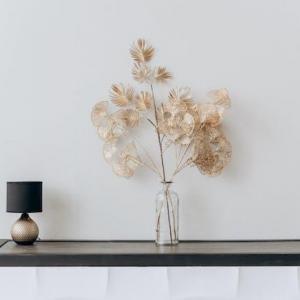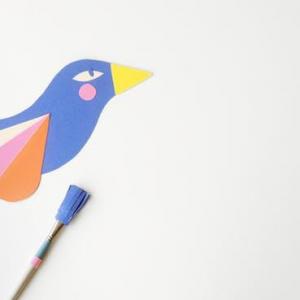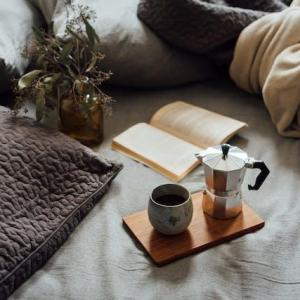
Cool and Calming Blues:
Blue, with its association with the vastness of the sky and the serenity of the ocean, stands out for its calming effects on the human psyche. Cool blues, in particular, have been known to lower blood pressure, slow down heart rates, and induce a sense of tranquility. Lighter shades of blue, like sky blue or powder blue, create an atmosphere of openness and clarity, making them ideal for spaces where relaxation and focus are paramount. Consider incorporating cool blues into bedrooms, meditation spaces, or work areas to promote a calming ambiance. These shades are particularly effective in environments where stress reduction and mental clarity are sought after. On the other end of the spectrum, deeper blues such as navy or royal blue bring a sense of stability and can be used to convey sophistication and serenity in spaces like formal living rooms or home offices. The psychology of blue extends beyond its calming effects. Blue is also associated with trustworthiness and dependability, making it a popular choice in professional settings. Understanding the multifaceted impact of blue allows for its nuanced application in various contexts, creating spaces that not only soothe but also inspire trust and confidence.Energetic and Vibrant Reds:
Red, a color that demands attention and symbolizes passion and intensity, has a profound impact on human emotions. Vibrant reds are known to increase heart rates and stimulate heightened emotions. This color scheme can evoke feelings of excitement, warmth, and dynamism. Bright reds, such as scarlet or crimson, are perfect for spaces where social interaction and energy are desired, such as dining rooms or entertainment areas. However, the psychological effects of red should be approached with a balance. While red can inject energy into a space, excessive exposure may lead to overstimulation and potentially increase feelings of anxiety. Consider incorporating red as an accent color or using it strategically in spaces where brief bursts of energy and enthusiasm are welcome.The cultural and contextual significance of red is diverse. In some cultures, red is associated with luck and prosperity, making it a popular choice for auspicious occasions. In other contexts, it may signify love and passion. Understanding the cultural nuances of red adds depth to its psychological impact, allowing for a more nuanced use of this vibrant color.
Balancing Greens for Harmony:
Green, associated with nature and growth, is a color scheme renowned for promoting balance and harmony. Known for its calming and refreshing effects, green is suitable for a wide range of environments. Light greens, such as mint or sage, evoke a sense of tranquility and are conducive to relaxation.Deeper greens, such as forest green or emerald, bring a touch of sophistication and balance to interiors. Green is particularly effective in spaces where a connection with nature is desired, such as bedrooms, offices, or areas designated for wellness activities. This color scheme fosters a sense of balance and stability, contributing to an overall feeling of well-being.
The psychological impact of green extends beyond its calming effects. Green is often associated with growth, renewal, and fertility, making it a symbolic choice in spaces where these themes are relevant. Understanding the multifaceted symbolism of green allows for its purposeful incorporation in environments seeking both balance and vitality.
Soothing Neutrals for Versatility:
Neutrals, encompassing whites, grays, and browns, are versatile color schemes known for evoking a sense of calm and simplicity. White, symbolizing purity and cleanliness, creates an open and airy atmosphere. Gray, often associated with sophistication, provides a neutral backdrop that can complement other colors effectively.Brown, reminiscent of earthy tones, conveys warmth and grounding. Neutrals are highly adaptable and can serve as a base for various design styles. They are especially effective in minimalist or modern interiors, creating spaces that feel timeless and serene. Neutrals also serve as a backdrop, allowing other accent colors to take center stage.
The psychology of neutrals is rooted in their ability to create a sense of balance and neutrality. Neutrals act as a canvas, providing a foundation for other colors to shine. In minimalist design, neutral color schemes contribute to an uncluttered and harmonious aesthetic, allowing the focus to remain on form and texture.
Sunny Yellows for Positivity:
Yellow, the color of sunshine, is renowned for its ability to evoke positivity and warmth. This color scheme stimulates mental activity, enhances creativity, and induces feelings of happiness. Light yellows, such as butter or lemon, create a cheerful and welcoming atmosphere, making them suitable for kitchens, living rooms, or any space where a burst of energy is desired.Darker yellows, like mustard or gold, bring a touch of sophistication and can be used to add warmth to interiors. Yellow is an excellent choice for spaces where social interaction and a sense of vitality are encouraged. However, it's crucial to use yellow judiciously, as excessive exposure can lead to feelings of agitation.
The psychology of yellow extends beyond its positive associations. Yellow is often associated with concepts of enlightenment, knowledge, and optimism. In spaces where fostering a positive and uplifting atmosphere is key, the strategic use of yellow can contribute to a sense of joy and well-being.
Practice Mindful Time Blocking:
Mindful time blocking involves allocating specific time periods for different types of activities throughout the day. Instead of a rigid schedule, this approach allows for flexibility while ensuring that essential tasks and enjoyable activities receive dedicated attention.Begin by categorizing your daily activities into different blocks, such as work-related tasks, personal development, family time, and relaxation. Assign specific time slots for each category, keeping in mind your energy levels and peak productivity periods. For example, if you're most alert in the morning, allocate that time for focused work tasks.
Incorporate breaks into your time blocks to prevent burnout and maintain overall well-being. Use these breaks for short walks, stretching, or relaxation exercises. Mindful time blocking not only enhances productivity by creating focused work periods but also ensures intentional moments for activities you love, fostering a healthier and more balanced daily routine.
Create a Digital Detox Routine:
In the digital age, constant connectivity can contribute to information overload and diminish the quality of our daily routines. Creating a digital detox routine involves intentionally disconnecting from electronic devices for a designated period, allowing for mental rejuvenation and the creation of space for more meaningful activities.Designate specific times in your day or week for a digital detox. This could involve turning off notifications during family dinners, designating a "no-screen" hour before bedtime, or setting aside a weekend day for technology.
In the intricate tapestry of human experience, color plays a profound role in shaping emotions, influencing moods, and defining the atmosphere of our surroundings. Our exploration into various color schemes and their psychological impacts reveals a fascinating interplay between the visual and the emotional, offering insights into the art of intentional design.
From the cool and calming blues that evoke tranquility to the energetic and vibrant reds that ignite passion, each color scheme holds a unique power to elicit specific feelings and responses. The balancing greens invite harmony, while the soothing neutrals provide a versatile canvas for creativity. Sunny yellows radiate positivity, and the mindful practice of time blocking ensures that our daily routines align with our values and aspirations.
Moreover, as we navigate the digital age, the incorporation of a digital detox routine becomes paramount. By intentionally disconnecting from screens, we create space for genuine connection, introspection, and the activities that truly enrich our lives.
The world of color psychology is dynamic and culturally nuanced, offering endless possibilities for personal expression and intentional living. As we navigate our environments, we are architects of our own emotional landscapes, choosing color palettes that resonate with our individuality and contribute to the overall well-being of our spaces.
In the quest to create atmospheres that inspire, uplift, and support our daily pursuits, let us continue to explore the language of color. May our homes, workspaces, and personal sanctuaries be curated with intentionality, reflecting not only our aesthetic preferences but also the emotions we wish to cultivate. In the vibrant spectrum of life, let color be our ally, transforming the ordinary into the extraordinary and infusing each day with the hues of our aspirations and desires.
Article
Be the first comment














